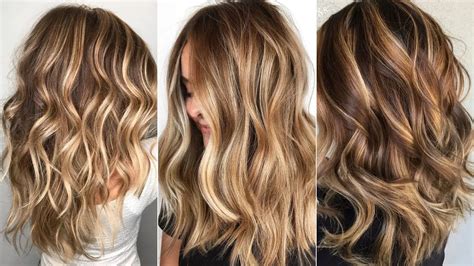Introduction

Hair coloring is a versatile art form that allows individuals to express their creativity and enhance their appearance. Among the numerous hair coloring techniques available, full highlight and partial highlight stand out as popular choices for achieving distinctive looks. This article delves into the nuances of these two techniques, exploring their benefits, drawbacks, and when each approach is most appropriate.
Understanding Full Highlights
Full highlights involve applying bleach or a lightening agent to saturate the entire head of hair, creating a uniform, sun-kissed effect. This technique is ideal for those seeking a dramatic transformation or a complete change of color.
Benefits of Full Highlights:
- Drastic change: Full highlights allow for a significant alteration in hair color, making them suitable for drastic transformations.
- Uniform coverage: The bleach or lightening agent is applied evenly throughout the hair, resulting in a uniform, consistent color distribution.
- Low maintenance: Once full highlights are achieved, they require minimal maintenance compared to partial highlights or other coloring techniques.
Drawbacks of Full Highlights:
- Potential damage: Bleaching the entire head of hair can cause damage, especially if the hair is already processed or fine.
- Time-consuming: Full highlights can be a time-consuming process, taking several hours to complete.
- Costly: Due to the extensive application, full highlights can be more expensive than partial highlights.
Understanding Partial Highlights
Partial highlights focus on lightening only specific sections of the hair, creating subtle color variations and depth. This technique is preferred by those seeking a more natural-looking effect or highlighting specific strands.
Benefits of Partial Highlights:
- Natural look: Partial highlights preserve the natural base color while adding subtle highlights, resulting in a more blended and natural appearance.
- Versatile: Partial highlights can be customized to suit individual preferences, enhancing certain areas or adding dimension to the hair.
- Less damaging: Since only portions of the hair are bleached, partial highlights cause less damage than full highlights.
Drawbacks of Partial Highlights:
- Limited impact: Partial highlights do not create as drastic a change as full highlights, resulting in a more subtle transformation.
- Higher maintenance: Compared to full highlights, partial highlights require more frequent touch-ups to maintain their appearance.
- Can be tricky: Applying partial highlights correctly requires skill and precision to achieve a balanced and natural-looking result.
Choosing the Right Technique
The choice between full highlights and partial highlights depends on several factors:
- Desired effect: Full highlights are ideal for dramatic transformations, while partial highlights are suitable for more subtle enhancements.
- Hair condition: If the hair is damaged or fine, partial highlights may be a better option to minimize further damage.
- Time and budget: Full highlights require more time and cost than partial highlights, so these factors should be considered.
- Maintenance requirements: Partial highlights require more frequent touch-ups than full highlights.
Tips and Tricks
- Consult a professional: Always seek the advice of a qualified hair stylist to determine which technique is most appropriate for your hair type and desired outcome.
- Use high-quality products: Invest in reputable brands that offer ammonia-free and damage-preventing hair coloring formulas.
- Follow the instructions carefully: Read the product instructions thoroughly to ensure proper application and processing time.
- Protect your hair: Use a deep conditioning treatment before and after coloring to minimize damage and keep your hair healthy.
- Avoid over-processing: Follow the recommended processing time to prevent hair breakage or discoloration.
Common Mistakes to Avoid
- Overlapping: Avoid overlapping highlights to prevent streaks and uneven application.
- Uneven application: Ensure that the bleach or lightening agent is applied evenly throughout the hair to achieve a consistent result.
- Harsh chemicals: Choose hair coloring products that are ammonia-free and minimize the risk of damage.
- Incorrect processing time: Under-processing or over-processing can lead to insufficient lightening or hair damage.
- Ignoring hair health: Neglecting hair care after coloring can result in dryness, breakage, or discoloration.
Step-by-Step Approach
Full Highlights
- Section the hair into four equal parts.
- Apply bleach or a lightening agent to the entire head of hair, avoiding the roots.
- Process for 30-45 minutes, or according to product instructions.
- Rinse and apply a toner to neutralize any unwanted tones.
- Condition the hair and style as desired.
Partial Highlights
- Section the hair into smaller sections.
- Apply bleach or a lightening agent to the selected strands, targeting only the desired areas.
- Process for 15-30 minutes, or according to product instructions.
- Rinse and apply a toner, if necessary.
- Condition the hair and style as desired.
Conclusion
Full highlights and partial highlights are both versatile hair coloring techniques that offer unique benefits and drawbacks. Understanding the nuances of each technique and considering the desired effect, hair condition, and maintenance requirements will help you make an informed decision. By following the tips and tricks outlined in this guide, you can achieve stunning hair color results that enhance your appearance and boost your confidence.
